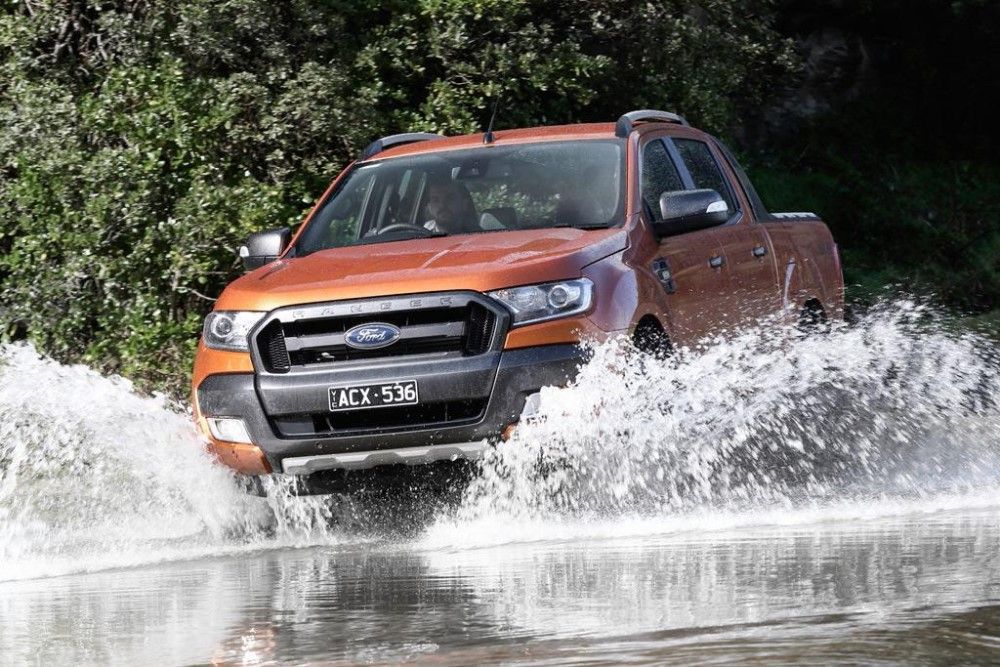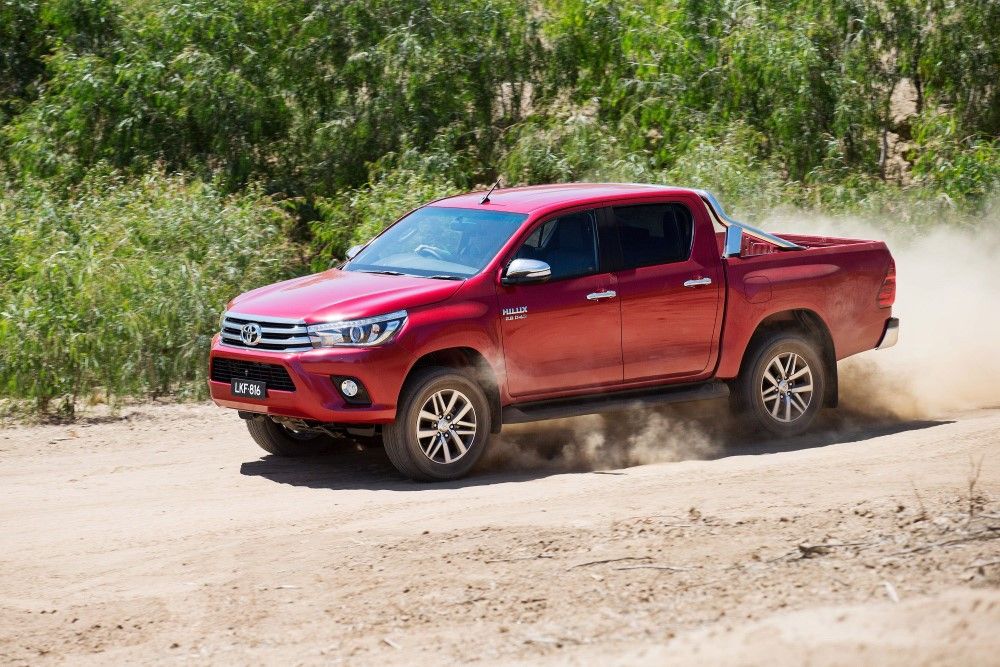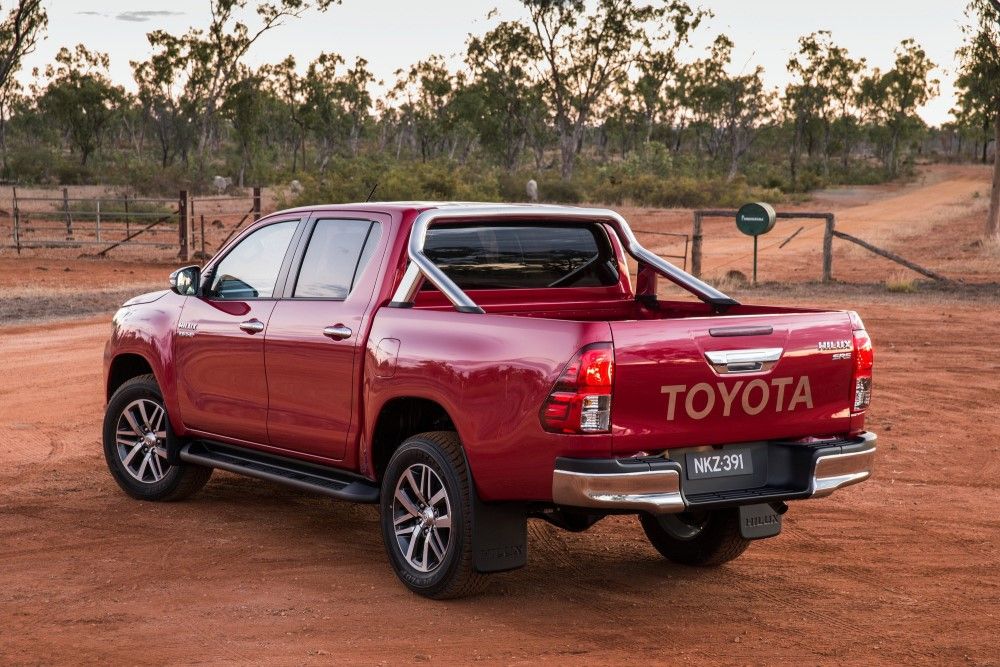
Toyota Hilux vs Ford Ranger
Thinking about a second-hand Ranger or Hilux? Can’t decide which one is best for you and will give the better ownership experience? Here’s a handy guide from the Only Cars experts.
They're regularly the two top-selling vehicles in Australia and order books for new models stretch well into 2024. So patience is the word for anyone wanting a new Ford Ranger or Toyota Hilux … unless you don’t mind picking up a used example.
Because they’re hot sellers new, they’re also in plentiful supply on the second-hand market, especially just prior to a new model launch when fleets — and private owners — sell up to move up.
The only hiccup could be that the ute you want may not be as cheap as you expected. Cox Automotive Australia market values show that in in the nine months of 2023 to the end of September, 14,407 Rangers went on the used-car block and in the same period, 12,485 Hiluxs were offered for sale.
To give some indication of the strength of the used market for both these utes, consider that a 2015 Ranger XLT dual-cab diesel automatic 4x4 model is worth $31,000-$35,000 today and was purchased for about $57,000 eight years ago.
That’s a 38-45 percent drop in value since new.
For the Hilux, a 2015 SR5 in the same configuration is now about $37,000-$40,000 and was about $56,000 new. That’s a slide of a relatively modest 28-34 percent.
For buyers of a new ute, the strength of the Hilux used-car valuation makes it attractive. As a used-car buyer, not so much and is one of the reasons why even on the used-car market, the Ranger is more popular than the Hilux.
But it may not be the only reason. Because there’s so many variations of models over the years (there’s more than 40 model variants in the 2015 Ranger alone), we’ve picked 2015 as the year for a comparison between the Ford and the Toyota. Also, we chose a double-car ute, high spec (Ranger XLT and Hilux SR5), 4x4 with automatic.
Want to know which one could be the best for you? Read on.
The Basics
FORD RANGER XLT
Used car price (today): $31,000 - $35,000
Price (2015): $56,590 (plus costs)
Average mileage: 160,000-240,000km
Drive train: 3.2L, diesel, 4x4, automatic
Body type: Dual-cab ute
TOYOTA HILUX SR5
Used car price (today): $37,000 - $40,000
Price (2015): $55,990 (plus costs)
Average mileage: 160,000-240,000km
Drive train: 2.8L, diesel, 4x4, automatic
Body type: Dual-cab ute

Price comparisons show that the Hilux was a slightly cheaper ute to buy than the Ranger but that you’ll pay more for a Hilux on the second-hand market.
That’s nothing to do with performance or equipment factors, rather it’s about the fact that parts and service facilities for the Toyota are common throughout the country (actually, the wold) compared with the relatively new Ford Ranger. This, and thorough engineering, have built Hilux’s reputation.
For many buyers, that gives Hilux the thumb’s up straight away. But it’s too early to dismiss the Ranger because it has advantages in other areas.
SIZE: Like most of the players in the dual-cab market, the physical dimensions are similar.
For people with parking space concerns, the Ranger is the longest at 5426mm, 96mm longer than the Hilux. The Ranger is also wider by 5mm (at 1860mm), 6mm higher (at 1821mm) and sits on a wheelbase that is 3220mm, up a significant 135mm on the Hilux’s 3085mm.
The Ranger has a smaller front overhang (908mm compared with the Hilux’s 1000mm) and has a wider track (1560mm).
In the ute’s tray, the surprise is that the bigger Ranger has a smaller tray. It measures 1440mm long by 1420mm wide. The Hilux is 1560mm long and 1520m wide. So if you have load issues, the Hilux is the pick.
Neither will fit a standard pallet between the wheel aches. The Ranger has a 1120mm gap and the Hilux is 1000mm and even less with a tub liner.
In its ability to work, the Ranger has a 3500kg braked tow rating, up on the Hilux at 3200kg.
Payloads also differ (model variant dependant) with the Ranger XLT at 952kg and the Hilux SR5 lower at 925kg.
INTERIOR:
These are designed for work first, play second. In late years, both brands upped the comfort and convenience factors and even improved visual appeal. But in 2015, things were still a bit raw.
Both use good quality materials that should reduce damage by heavy hands. The only real issue is that the hard plastics used on the dashboards and trim can really show up any scrapes and marks, making the cabin look unkempt and that impression likely to apply to the rest of the vehicle.
Both also have good storage and personal item spaces, easy-to-use controls and good visibility.
Ford fitted the Ranger with different versions of its Sync infotainment and communication system with the 2015 model having the Sync2 V2. It can’t be upgraded to Sync3. It is described as a solid system but some owners have reported problems with erratic, or non-existent, Bluetooth connection.
Toyota has its own infotainment system but it’s not as intuitive or effective as the Ford unit. The Toyota also suffers from connection issues through Bluetooth, poor quality monitor resolution and sluggish touch controls.
Subjectively, the Ford is more comfortable. Much of this is about the slightly less jiggly ride of the Ford suspension. Seat comfort in both utes is surprisingly good in the front, with as-expected comfort in the ear where the focus is on head and leg room.
The Ranger also has slightly more cabin room and there’s more room for rear passengers, especially noted when fitting child seats. Both vehicles have Isofix anchors.
Dual-cab utes are often used for weekday work, weekend leisure but accessing the baby seat tether anchors and connecting the seat capsule webbing is certainly something you wouldn’t look forward to every Friday night.
DRIVETRAIN:
Ford Ranger XLT
Engine: 3.2L 5-cyl turbo-diesel
Transmission: 6-speed automatic; 2-speed transfer case (4x4)
Power: 147kW @ 3000rpm
Torque: 470Nm @ 1750-2500rpm
Toyota Hilux SR5
Engine: 2.8L 4-cyl turbo-diesel
Transmission: 6-speed automatic; 2-speed transfer case (4x4)
Power: 130kW @ 3400rpm
Torque: 420Nm @ 1600rpm

The Ranger’s higher power and torque figures suggest bette on-road performance and that becomes reality on the road, although the difference isn’t huge.
Ford claims 9.0 litres/100km as an average fuel consumption (but think closer to 10 L/100km in reality) unless towing, then it can climb dramatically depending on tow weight.
Toyota says the Hilux in 2015 had an average of 8.5 L/100km. In reality it’s about 9.5 L/100km and, again, much higher when towing. Both utes have an 80-litre fuel tank.
There’s been no major problems reported with the Ford inline five-cylinder engine. The Toyota engine has been through some diesel-particulate filter and timing chain issues with repair supported by Toyota.
SAFETY: Ute safety has come a long way since 2015 but both the Ranger and Hilux had some decent equipment to minimise occupant injury. For example, both had a 5-star crash rating and a good compliment of airbags (seven in the Hilux and six in the Ranger). Better is the Ford Ranger ‘safety tech pack’ that was optional in 2015 and included adaptive cruise control with forward collision alert, driver impairment monitor, lane-keep assist, and lane-departure warning. Both have a reverse camera.
SERVICING: Both had a three-year, 100,000km warranty and that’s obviously all over now. Later models had a five-year warranty. There were some hiccups with the Hilux’s timing chain and DPF but they should have been resolved by now. Service records are vital to both these utes. The Ranger needs an annual service but Toyota insists on every six months for the Hilux — and expensive proposition for the Hilux owner but one that if adhered to, should ensure the drivetrain is better protected over the years.
VERDICT: The Hilux is more expensive to buy on the used-car market but has a stronger reputation and longer parts availability history. The Ranger is just as durable and in sufficient numbers to have its own strong parts supply. The better buy depends on the individual vehicle — one that has been looked after and regularly serviced, rather than picking brands. If the playing field was level, the Ranger is the better vehicle, especially if it has the safety tech option pack. It’s more comfortable and has a higher tow rating, more payload and even though the Sync2 infotainment and communication system could present problems, had more features than the Toyota. Ensure the vehicle you’re looking at has a thorough check, especially underneath that may show a hard life off the road.
Once you've found the right car, the next step is sorting out car finance that actually works for your budget. Credit One is Australia's best-reviewed finance broker, with 3,000+ five-star Google reviews from customers who've been through the process. Check out Credit One reviews to see what people say, or head straight to the loan repayment calculator to see what the numbers look like.